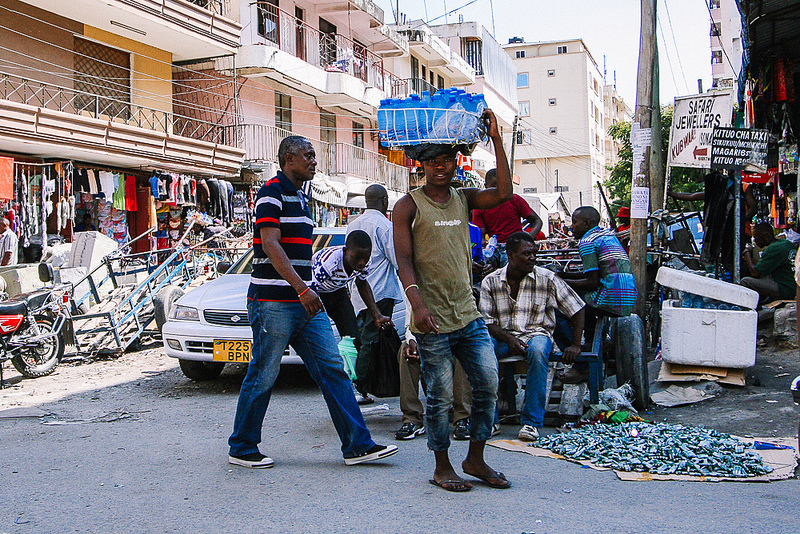My favorite part of learning any language (aside from that “aha!” moment when you figure out how a mess of words fit together into an actual sentence) is in the very beginning, where you don’t know yes from no or stop from go, but regardless you start by learning basic salutations and greetings. There are quite a few unique and funny ways that every culture uses to say ‘hello’, and Tanzania is no exception.
Some of these greetings are teachable. For example, you can drill a Chinese kid named God (true story) to greet his friends with “wussup”, so that he won’t stop saying the word no matter who he meets, but regardless at every utterance of “wussup” you will smile, God will smile, and everyone who hears will smile.
The physical greetings, though, those always throw me for a loop. Do I kiss once, or twice, or three times? Do I look you in the eye when I bow, or at your feet? Do I curtsey, or touch your feet, give you a high-five? Am I allowed to touch you, and if so, where? Am I exempt because I am so obviously a foreigner? Can someone just tell me what to do?!
Here in Tanzania, in addition to a very long roster of verbal greetings one must memorize, there are physical cues one must master when greeting a local. For example, the different forms of handshake that are always welcome, or more often, expected.
There’s the mutual-grabbing-of-the-wrists handshake, although I’ve only seen this a few times. More popular is the three-switch-up-handshake, where start with a soft cupping handshake with your fingers facing down, then switch quickly to a handshake facing up, and then switch facing back down, leading me to think of it as the “secret-clubhouse” handshake. Sometimes this handshake is done slow and leisurely, others more quickly where the second switch is barely even existent. Another common one is the handshake-sans-shake, but rather just two hands that meet in the middle and barely grasp each other, then remain as such for the first 10 seconds of a conversation bobbing up once or twice as if to say casually, “oh yeah, this is a handshake”.
Unlike America’s obsession with a firm handshake, the Tanzanian handshake is usually limp and noodle-y. I’m learning first hand–no pun intended–how to offer my hand, ever-so gently, to each familiar face I meet. I’m learning how not to grasp tightly, as I was conditioned in the States, but rather to barely bend my fingers around that of my counterpart. I’m learning how ten more seconds of holding hands with an almost-stranger is a sign of respect in this culture.
My favorite fruit guy at my market, John, smiles when he sees me. He stands up from a usual napping position to say, “Habari! Jessie, Karibu!” and stretches out his hand with a wide grin. After he takes my hand he doesn’t let go, he proceeds to ask what I want for the day. We continue a conversation–about mangoes, about avocados, about these weird new pears with rough skins that he got in recently–all while this kind man with a huge belly is holding my hand. At first it seemed like forever that this strange man was holding my hand, but I’ve since gotten used to it.
The guy who sells me chicken feed hollers at me, “Mama, Karibu!” from afar. It’s raining out, so he has some sort of old t-shirt or rag over his head which serves the dual purpose of keeping rain away from his eyes as well as provide padding when he hoists the 50kg bag of chicken feed onto his head to carry to my car. Before he grabs my bag of feed, though, he comes over to me and takes my hand. Mama, Habari? he asks. We exchange pleasantries, ‘Habari za kazi?’ How is work? ‘Habari za familia?’ How is your family? We’re still holding hands, slowly shaking up and down.
The guy at the fish market knows my car by now, and it seems like the other guys barely bother to get up as quickly as he does when I approach. ‘Hi, sista!’ He yells. ‘How are you’, he says in accented English, the melodic sing-song way that I’ve recognized the Swahili accent to be. He’s a young guy, who wears a red Arsenal jersey almost every single time I see him, and he initiates a three-switch-up-secret-style handshake.
I think back to my hometown in California, where while growing up I must have seen the same cashier at Safeway over and over, and over again some hundreds of times (and still do, when I visit my parents), yet there is nary a feign of recognition–on either of our parts. Here in Tanzania, these limp and barely-there handshakes, these weird wrist-grappling methods of saying hello, and these learned handshakes that make me think I’m in a special club–they do more than simply say “hi”, and they’re certainly a language all their own.





















